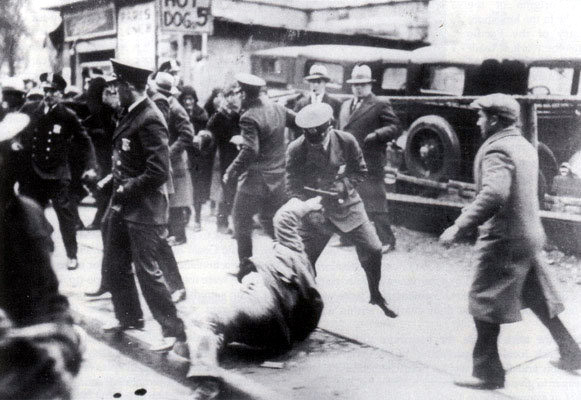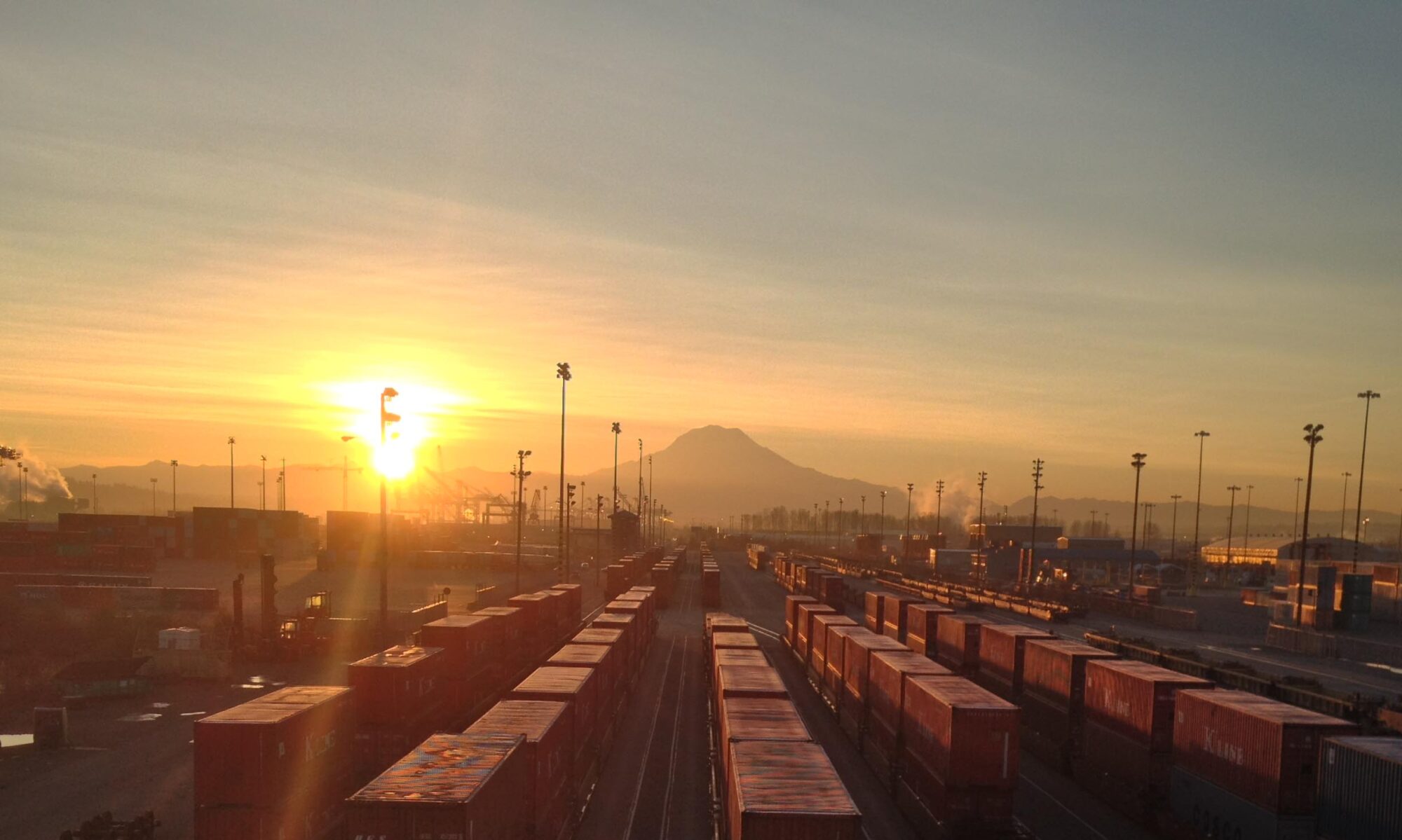
In a day and age when organized labor seems largely irrelevant to many, this is an appropriate time to stop and reflect on the gains made by unions in the past 100 years.
Although no one seems to remember now, some of the most basic protections we presently enjoy – like Social Security and Unemployment Insurance – came to workers courtesy of the push from organized labor. This package also includes the 40-hour workweek, the minimum wage, overtime, the child labor laws and much more, including some very basic things like the right to join a union and the right to strike. Most of this was enacted as parts of President Roosevelt’s New Deal legislation.
But none of these rights and protections were just handed to the workers, even if they were part of Roosevelt’s New Deal. People died to obtain these protections.
The years leading up to the New Deal – particularly the 20’s and 30’s – were a bloody, bitter time for workers. Strikes – where people died for their union beliefs – were commonplace.
Back in those days, the typical scenario was that the workers would go on strike or get locked out, and then the employers would hire scabs, and detectives (like the Pinkerton’s or the notorious Baldwin-Felts Agencies) to “protect” the scabs. Then the war was on.
The strikers were most often cast as “Commies” or communist-dominated in propaganda put out by the employers – the “Red Menace” was a very common theme. The Chamber of Commerce and other civic organizations usually backed the employers. Often, local citizen groups, augmented (or supplanted) by the hired detectives and backed by the local governments formed “posses” and took on the strikers in open warfare – all in the name of “civic virtue” (cleaning out the Red’s). Occasionally the National Guard even got into the act.
Good examples of this sort of open labor warfare include The Ludlow Massacre (1914), The Battle of Matewan (part of the West Virginia Coal Wars – 1920), the Battle of Blair Mountain (1921), The Herrin Massacre (1922), The Columbine Mine Massacre (1927), The Auto-Lite Strike of 1934, The Minneapolis Teamsters Strike (1934) and the 1934 West Coat Maritime Strike (which evolved into the West Coast General Strike of 1934).
Hundreds and hundreds of workers died in those years, fighting for even the most basic of protections.
The employers too, suffered greatly. They actually suffered so much, they eventually cried uncle. This resulted in legislation under Roosevelt’s New Deal, which included the Wagner Act of 1935 – also known as the National Labor Relations Act (NLRA).
The preamble of the NLRA says it all:
“The denial by some employers of the right of employees to organize and the refusal by some employers to accept the procedure of collective bargaining lead to strikes and other forms of industrial strife or unrest, which have the intent or the necessary effect of burdening or obstructing commerce…” 29 U.S.C. §§ 151
It’s the “industrial strife” not the employer’s benevolence that was the sole reason they gave us all these rights. The strikes and open industrial warfare leading up to the New Deal had become way too disruptive for the employers and the government to stomach. Because of this, the employers finally conceded it made more sense to allow workers some basic protections and rights rather than to continue in open warfare.
The trade-off was labor peace.
So can never take what we have for granted! Men and women died to gain those rights and protections, 70+ years ago.
For one, the International Longshore and Warehouse Union (ILWU) commemorates these worker’s supreme contributions every year, by stopping work and celebrating “Bloody Thursday” every July 5.
Bloody Thursday took place on July 5, 1934.
In 1934, the West Coast longshoremen and other maritime unions including the Seaman’s Union went on strike in on May 9. The main demands of the longshoremen were a union controlled hiring hall, and contract covering the whole coast. The seamen mainly wanted recognition for their union.
All the longshoremen struck up and down the entire West Coast. The longshoremen’s and seamen’s picket lines were honored by the Teamster Union, and by other unions. No cargo moved at all in any of the ports.
The employers consistently refused to deal with what they suggested were a “bunch of communists.” In the first month and a half of the strike, no progress was made at all.
Minor battles flared here and there up and down the coast, but by and large the strike was peaceful. This changed abruptly.
Nearly 60 days into the strike, on July 5th 1934, the employers decided they’d had enough and that it was time to open up the ports by force. They hired scabs – strike breakers. Early that morning they trucked the scabs to the docks. The police department was called in to protect the scabs.
In San Francisco that morning, about 2,000 picketers were gathered on Rincon Hill watching the railroad shunting refrigerated cars onto the Matson dock at the Embarcadero (as the San Francisco docks are named). The employers planned to have the cars loaded by scabs. There were jeers and catcalls from the picketers, but no overt acts of violence. Then at 8 AM, without provocation, the 800 or so police opened fire with tear gas grenades and then charged the picket line with riot clubs swinging.
The picketers responded with rocks and bricks and clubs, and the riot was on. Soon, a couple blocks away, two boxcars were set on fire and the police opened fire with their revolvers and more tear gas. The riot spread – not one battle but many.
While concentrated mainly around the south end of the docks and on Rincon Hill, The conflict eventually spread all across the Embarcadero from one end to the other. The police started using vomiting gas as well as the less potent tear gas.
Workers on the Bay Bridge (then under construction) were forced to leave their jobs that day because of all the gunfire.
After a lunchtime lull, the battle resumed in full force and fury when at about 1 PM, without warning a large contingent of police raided the longshore union headquarters on Steuart Street. This was a very hot battle, and the headquarters building was riddled with tear gas shells and gunfire from police revolvers. Workers trying to escape the gas were shot, clubbed and beaten. Blood flowed freely in the streets. Bodies littered the pavement.
The battles continued all day even overflowing from the area of the docks into the downtown.
The hospitals and jails were full to capacity.
Similar albeit smaller battles with less disastrous outcomes were raging at the other seaports up and down the West Coast.
Finally, the California Governor called in the National Guard to “keep order.” Soldiers with machine guns quickly set up positions on the Embarcadero. The battle was ended.
At the end of the day, there were over 100 hundred wounded. Two San Francisco union members died – Howard Sperry, a longshoreman and Nick Bordoise, member of the Cooks Union – murdered by the police.
The workers named the day Bloody Thursday.
Four days later, an estimated 40,000 people marched up San Francisco’s Market Street in the funeral procession for Sperry and Bordoise. The procession was estimated at a mile and a half to two miles long.
The procession was described as “…a river of men flowing up Market Street like cooling lava… the solemn strains of dirges and hymns… unaccountable thousands of spectators lining the streets with uncovered heads…” The Big Strike, by Mike Quin – Olema Publishing Company, © 1949.
And still the employers refused to bargain.
The San Francisco unions considered their options, and talk turned to a general strike of all unions. A vote was taken and a general strike was authorized. A strike committee consisting of representatives from the different unions was put in charge of coordinating the strike.
On July 16th, the general strike started and the whole city went out on strike – everything was shut down, except for a few essential services specifically authorized by the strike committee. Similar actions spread to Seattle, Tacoma, Everett, Portland, San Pedro and other ports up and down the West Coast.
Believing their own “Red Scare” propaganda, the government took this to be a sure sign of the start of the Bolshevik revolution and responded by rounding up and jailing hundreds of suspected “Reds” in the San Francisco Bay Area and elsewhere.
On July 19th, after scaring the holy bejesus out of the government and the employers, the general strike ended and a majority of union workers – except the longshoremen and the seamen – went back to their jobs.
The longshoremen and seamen, after voting on a proposal from the employers allowing their demands to be submitted to binding arbitration, went back to work on July 28.
The 1934 West Coast Maritime Strike ended.
The arbitration board ended up giving the union the control of the hiring halls, as well as a coastwise contract covering all West Coast ports – the longshoremen’s main demands. The seamen’s main demand – recognition of the International Seamen’s Union was granted. The employers also agreed to fire all the scabs they had hired during the strike, and to take no punitive action against the union leaders for their roles in the strike.
The unions won this battle, but at a terrible cost.
The kinds of sacrifices the workers made during this strike were typical of the period.
We must never forget!
So don’t take what we have now for granted. Union members paid with blood and even with their lives for these rights and protections we enjoy.
And if unions seem to be superfluous in this “enlightened” age don’t believe it for a minute! If there were no unions, we’d be just one big Wal-Mart – we’d all be working for close to minimum wage, without any real health insurance or other benefits, and we’d be liable to fired on a whim of some manager.
Labor unions are the only thing that keeps the employers honest. Yesterday, today, and always!
